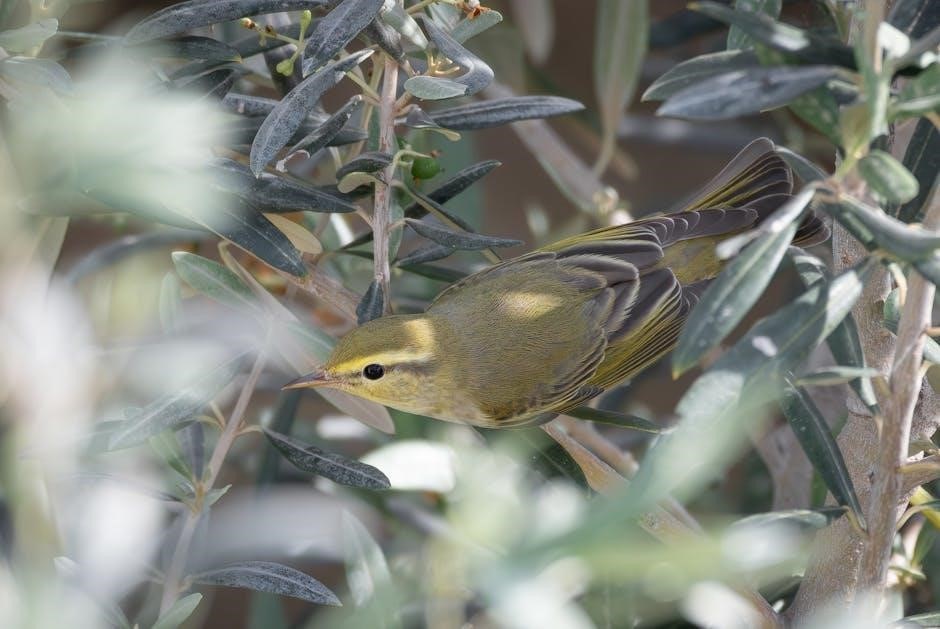Mary Oliver, a celebrated American poet, explores profound themes in In Blackwater Woods. The poem reflects on life’s cycles and transformation, capturing nature’s essence with vivid imagery and depth.

Overview of Mary Oliver’s Poetry and Style
Mary Oliver’s poetry is renowned for its accessibility and profound connection to nature. Her work often explores themes of spirituality, personal growth, and the human condition, weaving them seamlessly with observations of the natural world. Oliver’s style is characterized by simplicity, clarity, and a deep sense of wonder, which invites readers to pause and reflect. She frequently employs imagery and symbolism drawn from landscapes, animals, and seasons, creating a bridge between the tangible and the metaphysical. Her poetry is both intimate and expansive, offering moments of quiet introspection while exploring universal truths. With a career spanning over five decades, Oliver’s unique voice has earned her a Pulitzer Prize and a devoted readership, solidifying her place as one of America’s most cherished poets.

The Significance of “In Blackwater Woods” in Her Work
“In Blackwater Woods” holds a distinctive place in Mary Oliver’s body of work, embodying her signature blend of nature and spirituality. The poem is notable for its exploration of the interconnectedness of life and death, a theme that resonates deeply with readers. Its vivid imagery, such as trees transforming into “pillars of light,” showcases Oliver’s ability to find profound meaning in natural phenomena. This poem exemplifies her gift for making abstract concepts accessible through tangible, evocative language. It is often celebrated for its universal appeal and its ability to evoke personal reflection, making it a cornerstone of her celebrated poetry. The work underscores her belief in nature as a mirror of human experience, reinforcing her reputation as a poet who bridges the spiritual and the earthly.

Themes of Nature and Spirituality

Mary Oliver’s poetry intertwines nature with profound spiritual reflections, exploring life’s essence through natural imagery and evoking a sense of transformation and divine presence.
The Interconnectedness of Life and Death
Mary Oliver’s In Blackwater Woods masterfully explores the intertwined cycles of life and death, reflecting on nature’s transformative power. The poem captures the essence of decay and renewal, emphasizing the continuity of existence.
Through vivid imagery, Oliver illustrates how life transitions into death, only to rebirth into new forms. This theme resonates deeply, urging readers to embrace the natural order and find peace in life’s inevitable transformations.

The Role of Nature in Oliver’s Poetry
Nature serves as the cornerstone of Mary Oliver’s poetry, functioning as both a mirror to human experience and a source of profound spiritual insight. In In Blackwater Woods, Oliver uses the natural world to explore universal themes, drawing readers into a realm where the boundaries between observer and environment dissolve.
The poem’s vivid imagery—trees turning into pillars of light, the fragrance of cinnamon—reflects Oliver’s signature style of personifying nature. By attributing human qualities to natural elements, she fosters a sense of empathy and connection, inviting readers to contemplate their place within the larger web of existence.
Nature, in Oliver’s work, is not merely a backdrop but an active participant in the dialogue of life, death, and renewal, guiding readers toward introspection and a deeper appreciation of the world’s beauty and mystery.
Structure and Imagery in the Poem
The poem’s structure enhances its vivid imagery, creating a flowing and natural rhythm that immerses readers in the sensory details of the forest scene.

The Use of Trees as Metaphors

In “In Blackwater Woods,” Mary Oliver employs trees as profound metaphors for transformation and resilience. The line, “Look, the trees are turning their own bodies into pillars of light,” symbolizes the trees’ enduring strength and their ability to transcend their physical forms. This imagery suggests a divine or eternal essence, elevating the trees to symbols of hope and continuity. The phrase, “the long tapers of cinnamon and fulfillment,” further enriches the metaphor, associating the trees with warmth, comfort, and completeness. Through this personification, Oliver conveys the interconnectedness of life and death, reflecting the natural cycle of growth and decay. The trees, with their seasonal transformations, mirror human experiences of change and renewal, making them a powerful and relatable metaphor in the poem.
Light and Fragrance as Symbolic Elements
In “In Blackwater Woods,” Mary Oliver uses light and fragrance as symbolic elements to convey themes of transformation and fulfillment. The “pillars of light” created by the trees suggest a divine or transcendent force at work, while the “rich fragrance of cinnamon and fulfillment” evokes warmth and spiritual satisfaction. These elements are deeply intertwined, with light representing clarity and guidance, and fragrance embodying comfort and completeness. Together, they create a sensory experience that draws the reader into the poem’s meditative atmosphere. The imagery of light and scent also underscores the poem’s exploration of life’s cycles, where decay and renewal are intertwined. Through these symbols, Oliver invites readers to reflect on the beauty and meaning found in nature’s transformations.

Analysis of Key Lines and Phrases

Mary Oliver’s vivid imagery in “In Blackwater Woods” highlights transformation and fulfillment. Lines like “pillars of light” and “fragrance of cinnamon” explore nature’s spiritual and sensory depths profoundly.
“Look, the trees are turning their own bodies into pillars of light”
This iconic line from Mary Oliver’s In Blackwater Woods captivates readers with its vivid imagery and spiritual undertones. The phrase “pillars of light” transforms trees into symbols of transcendence, suggesting a divine or eternal essence within nature. Oliver’s choice of “their own bodies” emphasizes sacrifice and self-transformation, hinting at the cycle of life and death. The image of trees surrendering to change evokes a sense of surrender and renewal, central to Oliver’s exploration of nature’s profound truths. This line, rich in metaphor, invites readers to reflect on the interconnectedness of existence and the sacredness of the natural world, embodying Oliver’s unique ability to weave spirituality into the observable beauty of the earth.
“The long tapers of cinnamon and fulfillment”
Mary Oliver’s phrase, “The long tapers of cinnamon and fulfillment,” is a masterful blend of sensory and emotional imagery. “Cinnamon” evokes warmth and richness, while “fulfillment” suggests completion and satisfaction. The “long tapers” likely describe the narrowing forms of trees, drawing a parallel between natural transformation and human experiences of growth and realization. This phrase emphasizes Oliver’s ability to personify nature, giving it human-like qualities that resonate deeply with readers. The imagery engages multiple senses, inviting readers to connect with the natural world on a profound level. The phrase symbolizes the gradual, transformative processes in nature, much like the changing seasons or the life cycle of trees, reflecting themes of renewal and the embrace of life’s natural progression. It encapsulates Oliver’s poetic genius in bridging the physical and the metaphysical through vivid, evocative language.
Reception and Interpretation
“In Blackwater Woods” has garnered widespread acclaim for its profound exploration of nature and spirituality. Readers often describe it as deeply personal, resonating with universal themes of transformation and renewal.
Popularity and Critical Acclaim of the Poem
Mary Oliver’s “In Blackwater Woods” is widely cherished for its vivid imagery and emotional depth. The poem’s exploration of nature and spirituality resonates deeply with readers, making it a fan favorite. Critics praise its accessibility and universality, often highlighting its ability to connect the natural world with human experience. The vivid depiction of trees as pillars of light and the rich fragrance of cinnamon has captivated audiences, fostering a sense of wonder and introspection. Its themes of transformation and renewal have made it a staple in discussions of contemporary poetry. The poem’s popularity extends beyond academic circles, as it is frequently shared and reflected upon in personal and communal settings. Its enduring appeal lies in its ability to evoke a profound sense of connection to both the external and internal landscapes.
Personal Responses and Reflections on the Poem
Readers often find profound personal connections with “In Blackwater Woods”, as it invites introspection and emotional resonance. Many reflect on its vivid imagery, such as the trees becoming pillars of light, which evokes a sense of wonder and awe. The poem’s exploration of life, death, and transformation resonates deeply, encouraging readers to contemplate their own experiences and the natural world. The fragrance of cinnamon and fulfillment adds a sensory richness, making the poem feel both universal and intimate. Personal responses often highlight how the poem fosters a sense of gratitude and mindfulness, urging readers to slow down and appreciate life’s beauty. Its ability to bridge the external and internal landscapes makes it a cherished piece for personal reflection and shared discussions.

Leave a Reply
You must be logged in to post a comment.